Of all the species that swim the oceans, none steal the show-like species of Saltwater Aquarium Batfish. Their beautiful form, like that of a pet, and their captivating presence beg the question -how could you not want one? They are an excellent choice for an interesting aquatic friend for the intermediate aquarist. They belong to the Ephippidae family, which includes the Spides, Bases, and Sharts.
Content Table
These batfish mostly live in the Atlantic and Indo-Pacific seas. Deep-bodied, laterally compressed, with an anal fin with three spines, they are a unique species. Because they were long thought of as carnivores, a newly revealed talent for eating algae appears to be changing our knowledge of what batfish eat.
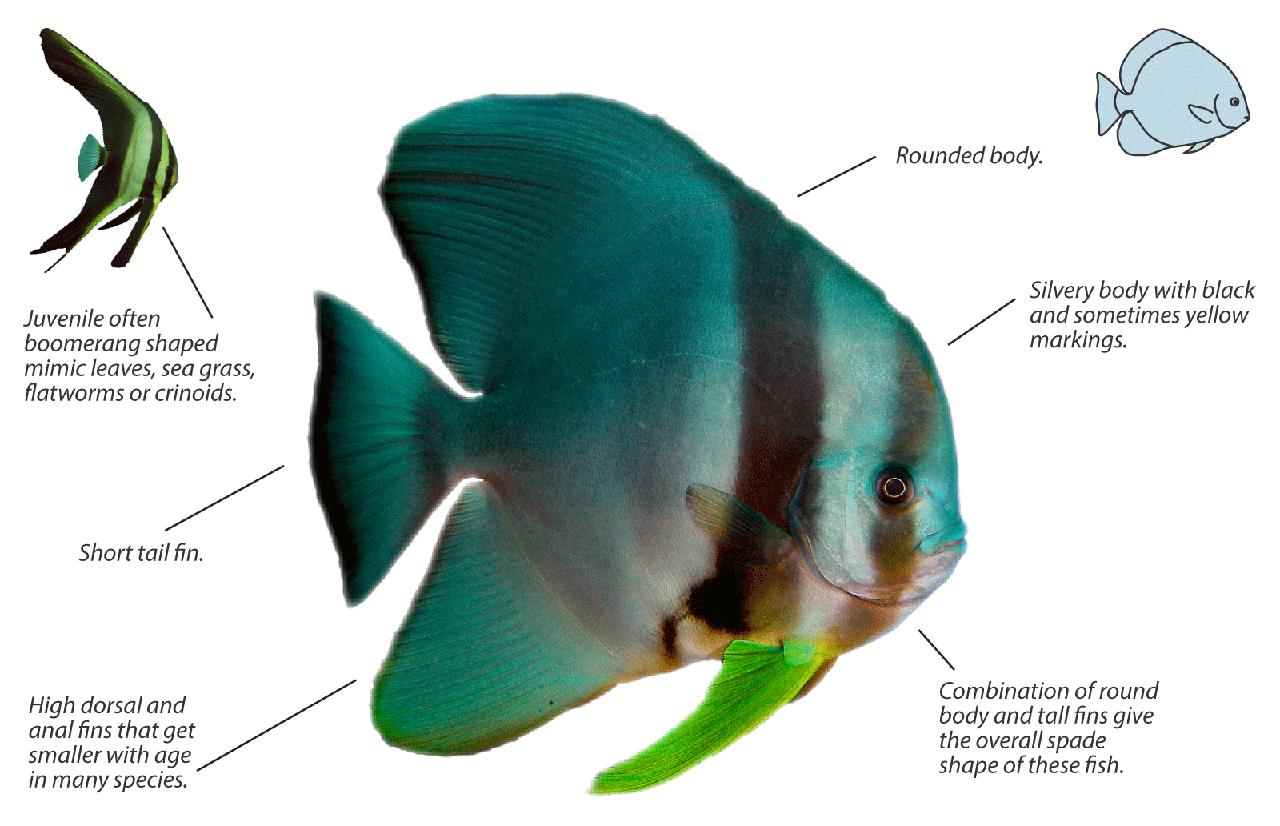
Batfish Profile
The batfish is a very interesting species of fish found in marine landscapes. They differ from other fish in many interesting ways. Their popular name, derived from their wing-like fins, sounds like a bat in the air and reflects their unusual looks. These fascinating creatures are available in a rainbow of colors from bright yellows and oranges to darker colors which meld into the environment. Their characteristic long, deep, laterally compressed body and three-spine anal fin paint a picture of elegance within the oceanic world.
1. Understanding Their Habitat and Distribution
Batfish are found in the tropical waters of the Atlantic and Indo-Pacific regions and prefer coral reefs, lagoons, and other shallow marine environments. It is their adaptability that characterizes them, and they can live in sandy bottoms, in rocky outcrops, or among coral, and are a very useful species to put in an aquarium.
2. Explaining the Temperament
Curious by nature with a surprising degree of intelligence, batfish are famous. Sometimes displaying a sense of inquisitiveness, they interact with their environment and tank mates, to the extent that they get a reputation as funny people in an aquarium. But their peaceable nature is often disturbed by a touch of territoriality, which is particularly evident when they reach maturity and have to be given sufficient room to spread their legs and enjoy themselves contentedly.
3. Behind the Name
The name batfish comes from the fact that when they swim, the columns of their pectoral fins closely resemble a bat’s wings in flight. Those features coupled with their elongated bodies make them unmistakable, and they are the only marine species of which they are members.
4. Adaptation and Survival
Their adaptability is not limited to the diversity of their habitats. Batfish have a certain special power. They use camouflage to hide from enemies and attack enemies. It adds another veil to their already intriguing person.
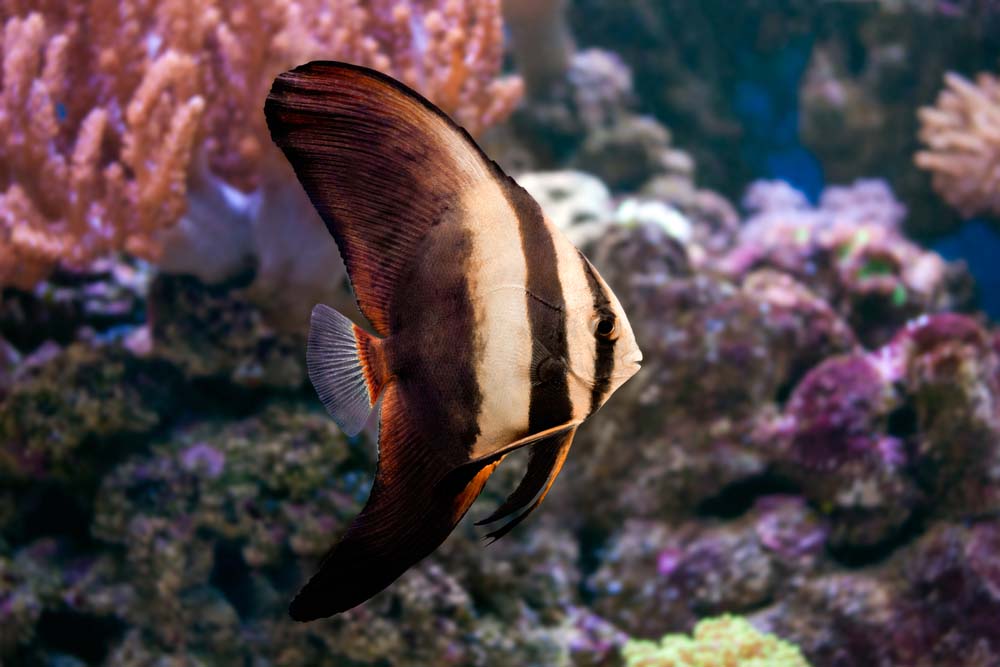
What Do Batfish Eat
Batfish are carnivorous and feed mainly on small fish, crustaceans, and invertebrates. Their diet depends on the species and their habitat.
1. Fish
Batfish are opportunistic predators and will feed on smaller fish which are easy to catch. They lure prey with their camouflage and habit of ambushing with a sudden strike and have wide mouths with sharp teeth that are used to catch and eat fish.
2. Crustaceans
In addition to crabs and shrimp, batfish also eat crustaceans. Using their pectoral fins to stir up sediment on the ocean floor, they’ll expose hidden crustaceans. After finding its prey, it will clamp down on it with its strong jaws.
3. Invertebrates
Batfish consume different kinds of invertebrates, such as worms, mollusks, and small cephalopods. Looking for these food sources, they will search the ocean floor or among reef structures, sifting through the substrate or coral crevices with their fins and modified pectoral fin rays.
4. Detritus
Besides fish, crustaceans and invertebrates, also eat detritus. Detritus includes decaying organic matter, such as dead plants and animals. And when other prey items are scarce, batfish will scavenge for this food source.
5. Feeding Behavior
Unusual eating habits help batfish survive. They look like a fishing pole with a lure attached to it, and their dorsal fin is elongated. This lure appeals to prey, imitating the shape of a small fish or invertebrate. When potential prey comes near, the batfish quickly protrudes its jaw and sucks in the prey.
Food Chain
Size and habitat determine the place of batfish on the food chain. They are usually mid-level predators, eating smaller fish and invertebrates. But they can be eaten by sharks and other larger fish as well.
Feeding Requirements
For this reason, batfish require a ready supply of several types of prey. They are common in areas with luxuriant fish populations, abundant coral reefs, and high invertebrate densities. Suitable hiding places and camouflage are important for batfish in their efforts to ambush their prey.
The Most Popular Types of Batfish
1. Longfin Batfish (Platax teira)
| A square snout-shaped head marks the Longfin Batfish, famous for its rapid color changes from gold to brown. They are seen in huge bands, numbering in the thousands, and have a fondness for the color yellow. Some curious spirits even track the yellow-suited divers. | 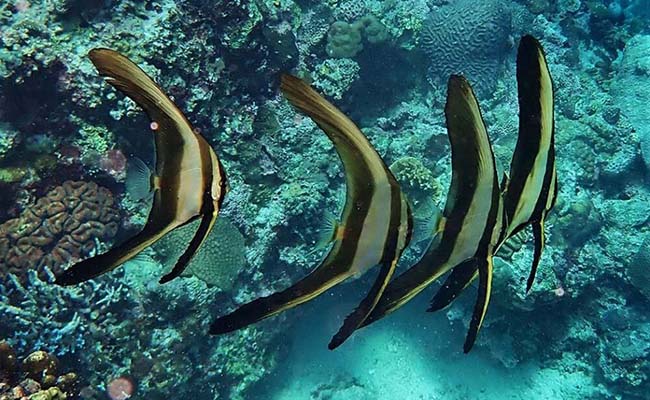 |
2. Orbicular Batfish (Platax orbicularis)
| Orbicular Batfish Living in large groups, the Orbicular Batfish moves sideways down-current and prefers reef areas in depths of 0-50m. More retiring than the Longfin, it roams reefs in the 0-30m range, so it is hard to know what it is doing there. | 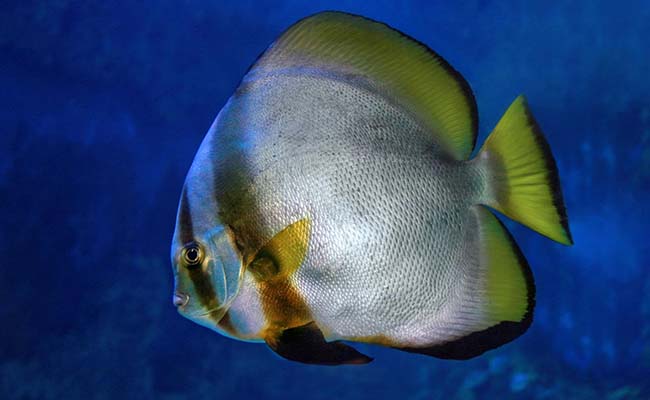 |
3. Boers Batfish (Platax boersi)
| Although smaller and rarer in marine territories, the Boers Batfish is marked by its golden highlights and near-circular shape. Because of its resemblance to the Orbicular Batfish, it is frequently mistaken for that fish. Its unique coloring attracts the attention of watchers. | 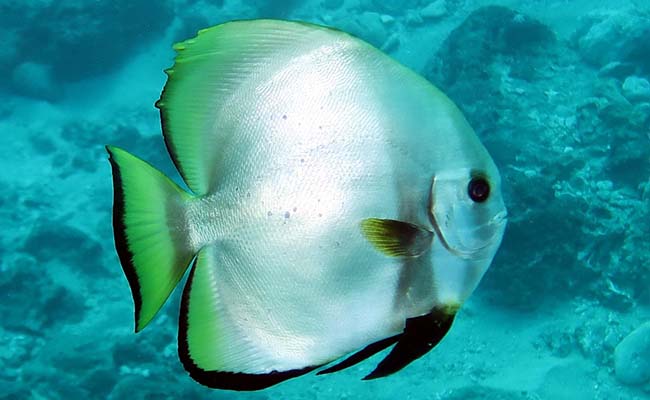 |
4. Tall-fin Batfish (Platax teira)
| With its steeply sloped, round noggin and a black spot on its belly close to where its ventral fin lies, the Tall-fin Batfish is truly a common sight underwater. And these creatures go through quite a transformation. Boomerang-shaped juveniles, evolve into large, round adults, which may be as long as 70cm. | 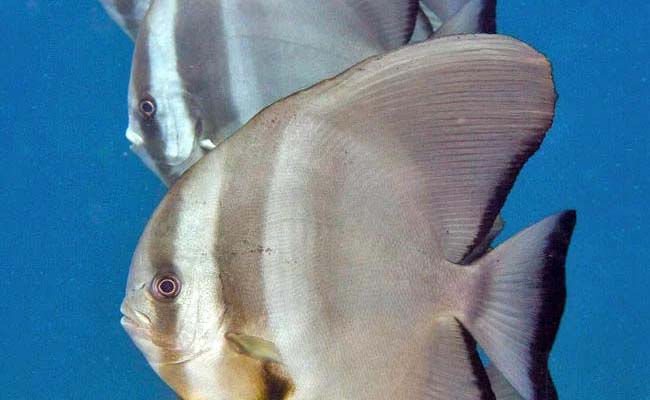 |
5. Round Batfish (Platax orbicularis)
| The Round Batfish (sometimes known as the Circular Spadefish) is distinguished by vertical black lines on the head and fins, which fade into a golden-yellow color as they approach the belly. These fish are strange-looking in appearance, but their potential length is 60cm. Its juvenile behavior is interesting, as it imitates dead leaves in the current until it grows up. | 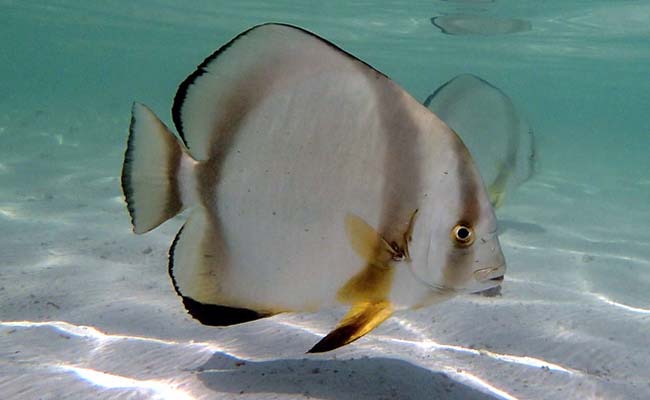 |
The Basic Requirements for Keeping Batfish
- A suitable living environment. A batfish needs a large tank with room to swim and roam at will. Because batfish can grow quite large, the tank should be at least 100 gallons.
- In addition, a tank must be covered or lidded, as batfish have been known to jump out.
- As for water conditions, batfish prefer a temperature of 72-80 degrees Fahrenheit and a pH of 8.1-8.4. Aquarium heaters are required equipment for them in captivity.
- Other than the tank itself, batfish need suitable tank decorations and hiding places too. Give them rocks, caves, and live plants similar to their natural environment, and areas to hide away and feel safe.
- The batfish also like to burrow in the sand, so it is necessary to give them a sandy substrate.
- Lastly, we look at batfish ‘compatibility with other fish. Batfish are generally peaceful fish, though they can be territorial or aggressive to smaller fish or those with long fins, for instance, Queen angelfish or butterfly fish.
The Bottom line
Stunning and charming, intermediate aquarists can hardly go wrong with selections such as batfish. Their adaptability to different environments and colorful eating habits make them the center of attention in saltwater aquariums. Knowing their different species and the special needs of each–for instance, ample space, the right tank conditions, and only tanks with compatible tanks ensure a happy cohabitation. With their fairy-like beauty, these little creatures bring life to the seas within your four walls.

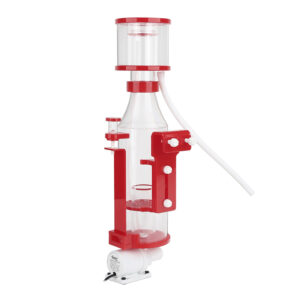
Leave a comment